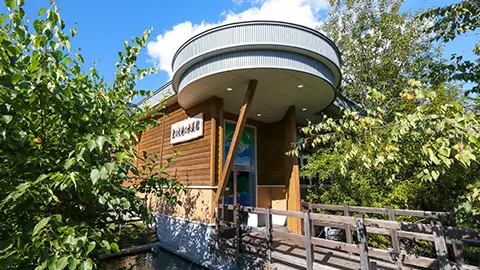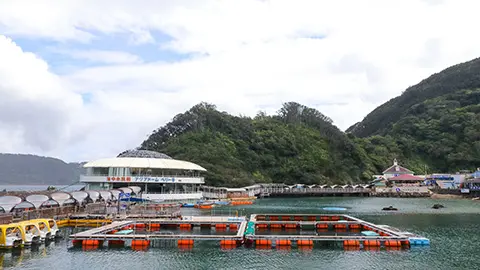VOL.196 SEPTEMBER 2024
JAPAN’S ENJOYABLE PUBLIC AQUARIUMS
Aquamarine Fukushima, an Interactive Aquarium where Visitors Can Enjoy Learning about Fukushima’s Natural Environment
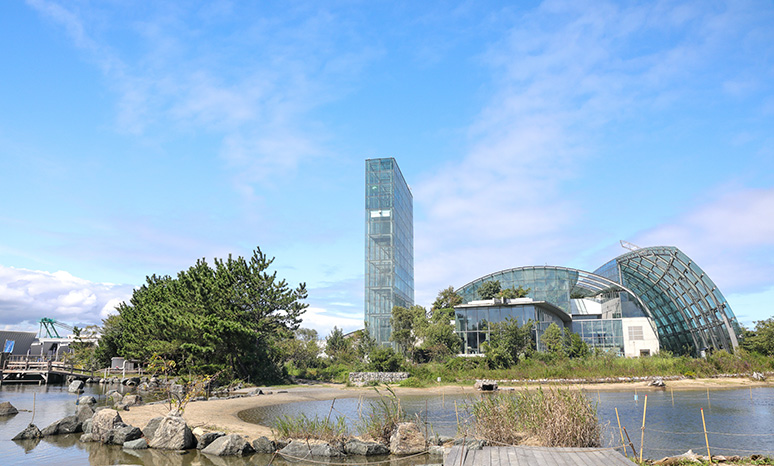
Aquamarine Fukushima is located at Iwaki City, Fukushima Prefecture.
Photo: ISHIZAWA Yoji
Aquamarine Fukushima is an interactive aquarium located in Iwaki City, Fukushima Prefecture. The beautiful aquarium building, covered by a glass dome, is home to approximately 800 species and 50,000 creatures. In addition to the exhibition facilities, there are fishing spots and a vast beach where visitors can enjoy not only viewing but also various hands-on programs. It is a popular aquarium that about 610,000 people visited in the last fiscal year (2023).
Aquamarine Fukushima (official name: Fukushima Marine Science Museum), located in Iwaki City, Fukushima Prefecture, faces the Pacific Ocean. The aquarium opened in 2000 as a lifelong educational facility with the basic philosophy of thinking about the future of people and the earth through the ocean.
According to NISHIYAMA Ayano, who works in the Educational Planning and Sales Department, the aquarium is unique in that it has a clear theme for its exhibits. It is also unique in that in addition to exhibiting living creatures in the water, they have reproduced the creature’s natural habitats.
“The offshore area of Fukushima Prefecture is at the intersection of ocean tides, where the warm Kuroshio Current* from the southern seas of the Japanese archipelago meets the cold Oyashio Current** from the north, and this area is the main theme of our exhibits. The Large “Shiome” Tank has a display capacity of 2,050 tons of water. This exhibit is divided into the Kuroshio Aquarium and the Oyashio Aquarium by a triangular tunnel. In the Kuroshio Aquarium, visitors can see powerful schools of migratory fish, such as sardines and bonito, swimming in the open sea, while in the Oyashio Aquarium, herring (nishin), starry flounder (numagarei), Japanese smelt (chica), and other fish of the northern seas are on display along with an abundance of seaweed.”
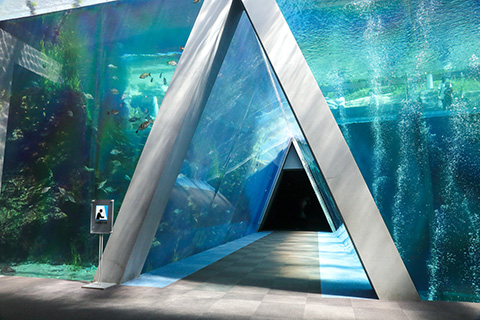
Photo: ISHIZAWA Yoji
NISHIYAMA also recommends the Coral Reef Sea exhibit.
“In addition to real coral, the exhibit features a unique long, slender, sand-hugging spotted garden eels (chin-anago) and a school of golden-lipped pigmy sweepers*** (kinmemodoki) that shine in the sunlight.”

The Coral Reef Sea. The orange fish in the center of the photo are pigmy sweepers (kinmemodoki).
Photo: Aquamarine Fukushima
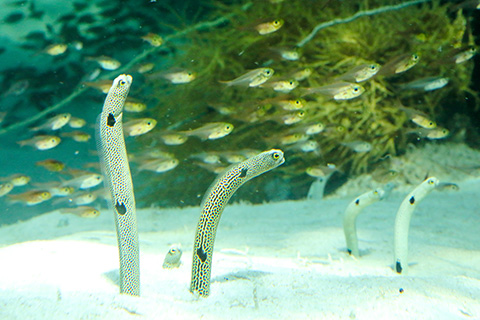
Photo: ISHIZAWA Yoji
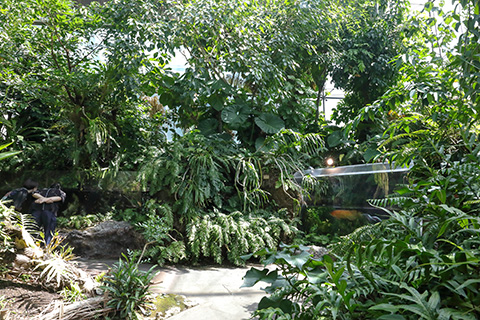
Photo: ISHIZAWA Yoji
In addition, the aquarium offers a full range of educational programs as a fun aquarium of learning.
“With the Fishing Experience****, you can eat the fish you catch fried on the spot. This is a hands-on program that allows visitors to think about the fact that they are ‘eating’ life. The aquarium also features Janome Beach, a 4,500-square-meter artificial reproduction of a seashore, beach, and tidal flat environment on the aquarium grounds, where visitors can actually enter the water and observe marine life up close. In addition, although not aquatic animals, there are a variety of hands-on facilities, such as Egg Forest Animal Play, an outdoor area with playground equipment that challenges the abilities of animals, as well as exhibits of animals that live in Japanese forests, such as Japanese squirrels. You can have fun while learning about living creatures.”
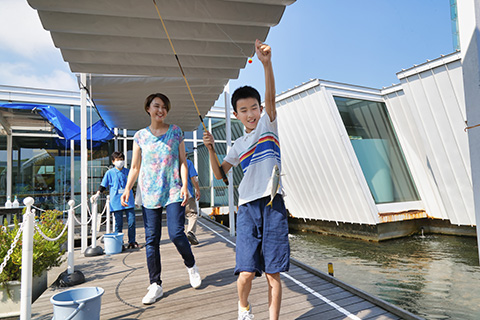
Photo: Aquamarine Fukushima
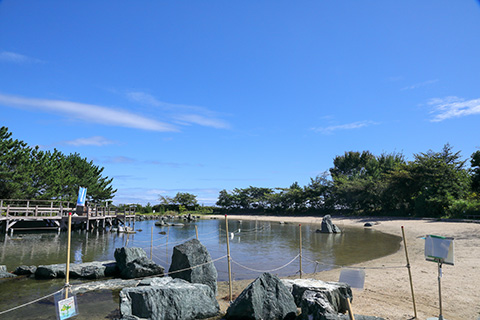
Photo: ISHIZAWA Yoji
Aquamarine Fukushima’s unique way of running an aquarium, which allows visitors to learn about the protection of the natural environment and the importance of life through these exhibits and experiences, has been highly acclaimed both in Japan and abroad.
NISHIYAMA explains, “The official website is available in English, Korean, and Chinese (traditional/simplified) as well as Japanese, so I hope you can learn more about the aquarium there.”
Please visit Aquamarine Fukushima’s website, and for those who have a chance to visit, see the exhibits and try the various hands-on activities.
* A warm current that is also called the Japan Current. This ocean current flows northward from the East China Sea into the Pacific Ocean on the east side of the Japanese archipelago and then flows northward along the southern coast of Japan.
** A cold current, also known as the Chishima Current. This ocean current flows southward along the Chishima Islands, located northeast of the eastern tip of Hokkaido in the northern part of the Japanese archipelago, to the Pacific Ocean side of the northeastern region of Honshu in Japan.
*** About 6 cm long, this fish lives in rocky reefs and coral reefs in shallow waters. The school of fish changes into a variety of shapes as they swim.
**** The fishing experience is currently suspended (as of the end of September 2024).
By MOROHASHI Kumiko
Photo: Aquamarine Fukushima; ISHIZAWA Yoji
